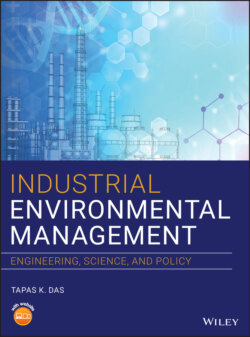Читать книгу Industrial Environmental Management - Tapas K. Das - Страница 165
Solution
Оглавление1 True. ISO 14000 standards are process standards, not performance standards. They do not prescribe to a company what environmental performance they must achieve. They provide a building block for a system to achieve environmental goals. As a consequence, these standards will lead a company to cost saving through better performance of the environmental aspects of an organization's operations.
2 False. ISO 14000 standards are international, voluntary standards developed by Technical Committee 207 (TC 207) of the ISO.
3 True. ISO 14000 standards are market driven and therefore are based on voluntary involvement of all interests in the marketplace.
4 False. The adoption of ISO 14000 standards is a continual commitment. Top management must establish the company's environmental policy and make a commitment to continual improvement and prevention of pollution and to comply is certified; the certificate is normally valid for three years. This may vary depending upon the certification body. The certification body must conduct surveillance audits no less frequently than once a year and carry out a full audit after three years.
5 False. USEPA has been participating actively in the standards development process. At present there is no indication of adoption of the ISO 14000 standards as a possible regulatory requirement. The driving force of the ISO 14000 series of standards is mainly from the private sector.
6 True. General qualification criteria for environmental management system auditors include education and work experience. Auditors should have completed at least a secondary education or equivalent with five years appropriate working experience or a college degree with two years appropriate work experience.
7 False. Companies can demonstrate compliance through either a self‐declaration or third‐party registration.
8 True. Under ISO 14000 certification, a single certificate can cover a specific site of a company, a specific facility, several facilities, or portions of sites or facilities. For example, one ISO 14001 certificate might encompass four different sites of a company in four different states and a portion of a site in a fifth state if these sites are audited at the same time against the same standard.
